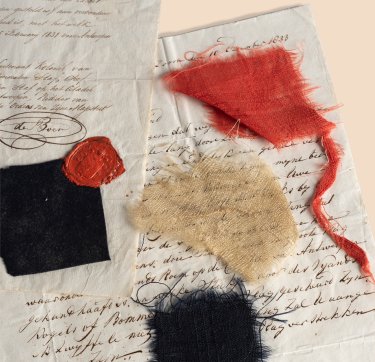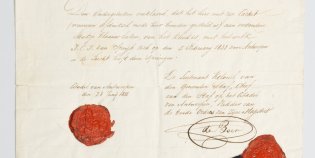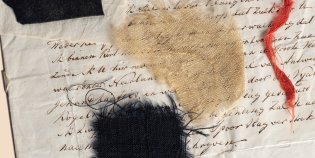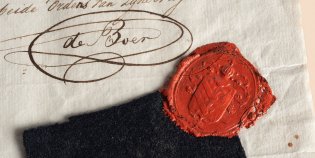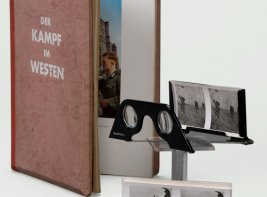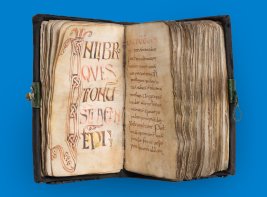Remains of Jan van Speijk's uniform
"I’d rather blow her up!" The story goes that this was the reaction of Naval Lieutenant Commander Jan van Speijk when his ship was overpowered by Belgian rebel forces in 1831. And this is exactly what Van Speijk did. All that remained were fragments of Van Speijk’s uniform. Of all the remarkable objects in the KB’s collection, these are among the most remarkable.
Who was Jan van Speijk?
The Belgian Revolution broke out in 1830. The Belgians wanted independence from the United Kingdom of the Netherlands and they were prepared to fight for it. On 5 February 1831, the wind blew the number 2 Dutch gunboat into the quay of the Schelde in Antwerp. At the time, Naval Lieutenant Commander Jan van Speijk was in command of the ship. Afraid that his ship would fall into the hands of Belgian rebels from Antwerp, he decided instead to blow her up, probably by firing a bullet into a powder keg. The ship exploded, taking Jan van Speijk, 27 crew members and several rebels with her.
Remains in the KB
The KB’s collection features several remarkable objects from this infamous episode in Dutch history: a piece of cloth from the uniform that Van Speijk was wearing, and a fragment of the Dutch flag that was fluttering above the Antwerp Citadel during the conflict. The Citadel is the fort that the Duke of Alva had built on the banks of the Schelde opposite Antwerp in the 16th century. The piece of cloth from the uniform is accompanied by an official letter confirming its authenticity.
How did the KB get hold of these objects?
The fragment of the flag and piece of cloth from the uniform are accompanied by two letters. The letters originate from a collection which belonged to the scholar P.J.B.C. Robidé van der Aa, which was passed to the KB in 1887. His father - C.P.E. Robidé van der Aa - had helped to promote Van Speijk’s hero image through poems and the large-scale lottery. Robidé van der Aa had got hold of a piece of cloth from van Speijk’s uniform through a friend, Hybo Everdes de Boer, Lieutenant Colonel in the Dutch army in Antwerp. The second letter, which also came from De Boer, contains fragments of the Dutch flag. The patriotic Robidé van der Aa kept both objects as physical evidence of a proud Dutch nation.
